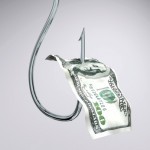![The Great Sino-American Currency War]()
by Steven Waechter | Aug 29, 2011
 The economic relationship between the United States and China is often described as being “co-dependent.†The Chinese lend America money, and the Americans buy Chinese goods. If the Americans stopped buying Chinese goods, then people in China would lose their jobs, and if the Chinese stopped lending to America, then Americans couldn’t consume Chinese goods, and around and around as the story goes.
The economic relationship between the United States and China is often described as being “co-dependent.†The Chinese lend America money, and the Americans buy Chinese goods. If the Americans stopped buying Chinese goods, then people in China would lose their jobs, and if the Chinese stopped lending to America, then Americans couldn’t consume Chinese goods, and around and around as the story goes.
It is a complete mirage. Right now, the Chinese are dedicating a large portion of their economy (land, labor and capital) to produce cheap, depreciating consumer goods to sell to the United States. We pay for these goods with American dollars, and China’s domestic exporters have so far been happy to accept these dollars in exchange for their products.
These dollars flow back to China through those exporters, but the Chinese companies that end up with these dollars have a bit of a problem: They are paid in dollars, but their outflows (wages, supplies, taxes and dividends to their owners) are largely priced in the Chinese yuan, so they need to exchange their dollars for the locally accepted currency. Rather than force their exporters to sell their dollars on the international currency exchanges, the Chinese central bank has been content to buy dollars from their own exporters.
This has led to two problems from the Chinese perspective: It causes massive inflation in China (floating between 6 and 8 percent lately) as the Chinese central bank prints yuan to buy all these dollars (when you hear politicians talk about the Chinese “suppressing their currency,“ this is what they are talking about); and, it has left the Chinese with a reserve of American dollars totaling something like $3 trillion in cash, accounts, and US Treasuries. They have thus far been happy to acquire this massive stockpile because the American dollar has enjoyed the status of the world reserve currency, leading it to be considered a trustworthy store of value.
This situation is about to change. The Chinese are about to figure out that they have acquired a stockpile of money that they will not be able to easily spend. Right now, about the only things the Chinese can easily buy with their dollars is oil and US Treasuries, and some in the United States actually think that this is a sustainable economic model (the Chinese work hard, sell things to us for money, and then lend it to us so we can spend it).
The only reason we were able to run the trade deficits which facilitated the assembly of these massive dollar reserves around the world was because the dollar was considered a reserve currency. China, Russia and Japan have had to export goods in order to import other goods, because other countries were largely unwilling to hold massive reserves of these currencies. Germany, with the largest trade surplus in the world and not enough arable land to feed its own populace, has had to export things of high value in order to purchase what it couldn’t produce at home.
In response to this, we have been told that the ongoing devaluation of the dollar will begin the long process of reversing our trade deficit, as it will make our exports more affordable and more attractive to other countries. It hasn’t worked – our trade deficit is growing as of August 2011, not shrinking. Devaluing the dollar has, rather than make our goods cheaper for foreigners, actually raised the prices foreigners already holding dollars need to pay for American goods. If India devalued the rupee, then the Japanese yen will buy more rupees and Indian goods will be more attractive to holders of yen because of the exchange rate. Since the dollar is held in reserves around the world , foreign customers end up paying the same higher prices as we do when our currency loses value, because they hold our currency already.
Eventually this will all come to an end. The financial authorities in China are going to stop printing yuan to buy all these dollars, and China’s exporters will have to sell their dollars on the international exchanges. When that happens, the decline in the dollar’s value will accelerate, and the value of the yuan will begin to rise. Many Americans will be priced out of Chinese goods, and because the United States has little to offer China in trade except agricultural commodities, prices for food will rise even farther in the United States, as the Chinese try to divest themselves of the dollar by purchasing something of value to them – food – not more US Treasuries that pay interest in the form of more American dollars that China can‘t spend.
But, without the American consumer, won’t there be massive unemployment in China? I don’t believe so. There might be a brief recession in China, as their economy re-balances from producing cheap goods for America to producing things for China’s domestic markets, as well as for countries like Germany – with the world’s largest trade surplus and a trade surplus with China individually. China’s economy will recover and grow, assuming the Chinese government doesn’t screw it all up by continuing to rob their own people with inflation, as they try to suppress their own currency further.
It isn’t clear if anybody can actually win this currency conflict; the American people will have a massive recession as our bubble economy based on spending borrowed money continues its collapse, and the Chinese populace will have spent the last 20 years working hard, saving money and enduring inflation so their government could amass a pile of foreign money and bonds that are being rendered worthless.
Although, if the dollar collapses the Chinese government will be at the reigns of the new global superpower; and in return American politicians got to spend money on social programs, wars and bike trails without raising taxes. So, if you happen to be either a Chinese foreign ministry official or a 15-term member of Congress, then it really is a win-win situation. If you are a Chinese factory worker or an American looking for work, then the arrangement looks rather less appealing.
Image © ktsdesign – Fotolia.com




by Steven Waechter | Jul 1, 2011
 Much attention has been focused on the size of the national debt as a whole; roughly $14.4 trillion. That number is astonishing, but the sheer size of the debt actually hides the true horror which is in store for the economy and future generations.
Much attention has been focused on the size of the national debt as a whole; roughly $14.4 trillion. That number is astonishing, but the sheer size of the debt actually hides the true horror which is in store for the economy and future generations.
The debt has many component categories, the largest of which is called Marketable Debt. That means the portion of the debt that was issued in treasury securities that can be sold in the secondary bond market, and it is around $9.2 trillion. The rest is Non-marketable, and held mainly by the Social Security Administration through bonds that cannot be sold.
The Marketable Debt also has its own sub-components, based on the type of security that was sold to incur the debt in the first place. Treasury Bills mature in 1 year or less and accrue interest; Treasury Notes mature in 2, 3, 5, 7 or 10 years, and Bonds mature in 30 years – and the Notes and Bonds pay coupon interest every six months. Each bond is sold at the prevailing interest rate at the time of the sale.
Here is the part that is frightening: Starting under President Clinton, expanding under Bush, and exploding under Obama, the federal government has shifted its borrowing from traditional 30-year Bonds to the shorter term securities.
According to the US Department of the Treasury’s Monthly Statement of Public Debt dated May 31, 2011, of the $9.2 trillion dollars of Marketable Debt, only about $965 billion are 30-year Bonds. More than $6 trillion are on Notes, with maturities ranging from 2 to 10 years, and a whopping $1.5 trillion are on 1-year Bills.
We are running record deficits, so we aren’t paying any of these off when they mature – we just roll them over onto new securities. We’re also adding another $1.6 trillion on to the pile.
Right now the Federal Reserve is fixing interest rates at levels so low that they cannot be maintained forever. When the Fed raised interest rates to more than 20% back in the 1979-82 recession, the Treasury actually sold some bonds at interest rates of 20% or higher. Imagine if interest rates went up to just 10% today, and stayed there for a couple of years. All of those Bills and Notes that mature and are rolled over will roll over to higher interest rates.
The interest payments alone will easily top $700 billion dollars a year, and since the debt is likely to grow further as interest rates go up, the country is likely to pay well over $1 trillion per year in coupon interest alone -which will be financed by the issuance of new Treasury Notes.
Imagine a world where the Army is disbanded, Medicare covers only critical care needs, the Social Security age is retroactively raised to 75, and the all retired government officials lose their pensions because the United States needs to dedicate so much of its budget to paying the interest on the debt. These are politically impossible measures.
The only other way to avoid direct default is to print money – destroying the nation’s economy with hyperinflation but technically making the interest payments, albeit with dollars devalued to near worthlessness. That’s how the Federal Reserve managed to keep interest rates so low up to this point – by buying Treasuries at artificially low interest rates with printed money. That is why Bill Gross of PIMCO dumped every piece of US Treasury paper his hedge fund owned – the returns on these bonds would have been eaten up by inflation.
There it is – either we ruin the dollar or we default. Default is by far the better option; we can restructure our debts to something more manageable. This will ruin our credit rating forever, so future politicians will not be able to run deficits for vote-buying projects and illegal “Kinetic Military Actions,†whatever those are. There are silver linings everywhere.

by John Bloom | Jun 29, 2011
 The Des Moines Register’s Editorial on Monday, June 27, 2011 was titled “Steep budget cuts now could harm economyâ€.
The Des Moines Register’s Editorial on Monday, June 27, 2011 was titled “Steep budget cuts now could harm economyâ€.
Summary – The Register’s Editorial group pointed us once again to the “nonpartisan fiscal agencyâ€, the Congressional Budget Office (CBO).  They quoted the CBO’s “dire warning about unsustainable federal deficitsâ€, but cautioned that the report also “warned that steep cuts right now could make the nation’s fiscal condition even worse by kicking the legs out from under the economyâ€.  Also on June 27th, The Wall Street Journal’s front page led off with an article titled “Debt Hamstrings Recoveryâ€[1].  The WSJ’s Tom Lauricella notes “Around the globe, the inability of governments and households to reduce their debt continues to cast a shadow over Western economiesâ€â€¦â€Unlike the aftermath of typical recessions, simply lowering interest rates hasn’t been enough to get growth back on track…Quite the opposite has been the case… The lowered cost of borrowing has enabled individuals and government to delay taking measures to change the way they spend and save.â€
Comment on the DSM Register’s Selective Reporting – I have noticed a pattern of inconsistency in the DSM Register’s and WSJ’s reporting.  Many featured articles in the WSJ, arguably a far more competent source of economic analysis than Gannett’s network, are minimized or never presented in the DSM Register. In addition to the “Debt Hamstring†analysis, another recent example would be the study released by management consultant McKinsey. They surveyed 1,300 companies and found that one third (1/3) of them will “definitely†or “probably†stop offering health insurance after 2014.  Since candidate Obama guaranteed us that we would be able to keep our current insurance, this seems like a worthwhile piece of news. If the DSM Register featured it, I must have overlooked it. I wonder if the nonpartisan CBO is aware of it?
Analysis of the “Spend Now, Save Later Strategyâ€Â - If we were in the position of China, over $3 trillion in foreign exchange reserves[2], I would not have a big issue with spending some of those reserves to shore up a short term slump in the economy.  However Government debt as a % of GDP has increased from 30% in the early 2000’s to 35% by the end of the Bush presidency (increasing under both Republican and Democrat congresses). During the Pelosi-Reid-Obama era, that % is now approaching 60%.  Meanwhile consumer debt and mortgage debt has more than doubled since 2000 (from $10 to about $20 trillion combined). Given the state of our debt, any increase in interest rates (almost a certainty the way the Fed has increased the money supply) will quickly multiply the consequences of our excessive debt.   For my entire adult life I have heard politicians claim that we will “save later, when the economy is strongerâ€. That day never comes. The Clinton-Gingrich era budgets were a nice anomaly but were not based on sustainable structural changes. The Register is wrong. We must cut government spending substantially and quickly.
[1] WSJ 27 June 2011, Debt Hamstrings Recovery
[2] WSJ, 26 June 2011, “China Pledges Continued Support for European Debtâ€



![The Great Sino-American Currency War]()
by Brian Nygaard | Jun 29, 2011
 It is now official. The semester is over, and the grades have been posted. Not only has the Obama Administration flunked ECON 101; they have now also summarily flunked FUD 101.
It is now official. The semester is over, and the grades have been posted. Not only has the Obama Administration flunked ECON 101; they have now also summarily flunked FUD 101.
The Wall Street Journal, in an editorial entitled ‘Bumps in the Road,†quoted the chief White House economist Austin Goolsbee as saying “there are always bumps on the road to recovery, but the overall trajectory of the economy has improved dramatically over the last two years.†The WSJ goes on to conclude that “The real ‘bumps on the road’ to recovery are these policies and the larger climate of hostility towards job creators that still prevails in Washington.†They compare the massively positive trajectory of the post-recession Reagan administration recovery with the current economic situation. The differences could not be more starkly contradictory.
To listen to the liberal pundits is to conclude that the Obama administration is the victim of past failures and that it is now doing everything it can to save the sinking ship. No one argues that the economy he inherited was other than a mess. The issue is rather that he has done everything in his power to take a very bad situation…and make it infinitely worse. Much of life is “infinitely projectable but for time.†It was infinitely projectable that we would be headed into a downward economic trajectory, contrary to Mr. Goolsbee’s disputations. The only question was how long it would take for the system to crumble under the stress. President Reagan did everything he could to sponsor job creation. President Obama has been absolutely masterful in destroying any hope of a reinvigorated jobs machine.
After the mid-term elections, it was generally thought that a collective sanity was about to return to our political and economic lives. The thinking was that the Democrats had done all the damage they could possibly do, and that they would turn their forward focus towards getting re-elected. The survival instinct would seemingly have indicated that they needed to take their foot off the throat of the economy. But, lo, many of us underestimated their focus on their ideology. Apparently, the beatings will continue until morale improves.
The reckless pursuit of egalitarian ends represents not only a violation of economic growth principles; it also represents a violation of basic human principles. What is now being experienced in the economy, and the pathetic (or completely non-existent) recovery, does not require any understanding of global macro economics. But it does require a base level understanding of the curriculum of FUD 101. Business people understand FUD. The Obama administration, it has now been made clear, simply do not.
FUD (the acronym used to describe any environment of FEAR, UNCERTAINTY and DOUBT), is the mortal enemy of all progress. When these characteristics exist in any human system, people do “what people do†when confronted with FUD…they do absolutely nothing. They keep their heads down. They keep their powder dry. They hold their cards close. They do not “invest in their futures.†The clichés go on indefinitely. The bane of any human existence, personal or institutionally collective, is the presence of unpredictable outcomes. And the Obama administration has created an environment where no one can predict anything with any level of certainty. The capitalist system in this country is under attack, and no one can predict where the next bombing raid might take place. FUD reigns supreme.
Had anyone in the Obama administration ever managed anything outside of the political arena, they would better see the magnitude of the damage they are creating. They would also not be surprised by what is now happening in the private sector. The President himself would not be attempting to use the bully pulpit to “shame†business leaders into hiring additional staff…as their patriotic duty. They would also not be continuing to blame the “situation they inherited†for the current situation. The path to economic recovery was well-documented thirty years ago by the Reagan/Laffer economic team. This same path has been thoroughly documented around the globe in the last several hundred years.  It is really too bad President Obama decided instead to make up his own “experimentally progressive†economic agenda.
All he really needed to do was take just one semester of FUD 101.



![The Great Sino-American Currency War]()
by Steven Waechter | Jun 21, 2011
 Around the corner from my former apartment in Newton was a house that was taken in foreclosure. The “For Sale†sign had been there for a very long time, the lawn wasn’t mowed regularly and the shrubs had died in the winter but hadn’t been removed.
Around the corner from my former apartment in Newton was a house that was taken in foreclosure. The “For Sale†sign had been there for a very long time, the lawn wasn’t mowed regularly and the shrubs had died in the winter but hadn’t been removed.
Walk around your own neighborhood and see how many houses are for sale. Sometimes the sign openly states that it is bank-owned, other times you might have to search on the county assessors website. There are plenty of bank-owned houses in Iowa; there are many, many more in California, Nevada, Michigan and Illinois.
The point is this: With such a large supply of bank-owned houses, of course houses will continue to fall in price. When a store has excess inventory, they need to have a discount sale to get rid of it, the same is true for houses, and banks are taking more houses every day.
Banks live and die by their balance sheets. If a bank has the cash to keep these houses in their possession, hoping that the prices will stabilize and that they can sell at prices that allow the banks to recover the unpaid mortgage, then they will keep on trying to sell houses in the usual retail market. As soon as a bank runs short of cash, or can no longer carry the costs of the property taxes and the maintenance for all these houses, they will sell their houses at fire-sale prices, probably even at auction. No reserve bids, the highest price gets the house free and clear.
This should have happened back in 2009-2010. Banks, short on cash and overloaded on houses and notes for houses, would have had to dump them for whatever they could get. This would have caused a sharp decline in housing prices, but as the houses were sold and put back to work – the job of a house is to shelter people – the supply would have been worked through and housing prices would have recovered and stabilized in relatively short order.
And then came the TARP bailout. The federal government gave billions of dollars in checks to the banks, giving them a “capital injection†– putting cash on their balance sheets – hoping that the banks would lend it out. They didn’t. They kept it in cash, and were able to carry thousands of foreclosed homes on their books through the crunch of 2009-2010.
Instead of a flash drop followed by a recovery, the American homeowner was “spared†a deep but short fall in home prices and instead have been subjected to this long, slow death march of declining home equity. The decline we got may have been slower, but it will be longer, guaranteeing that more private home owners will be forced – by a bad economy, relocation, or retirement – to try and sell their most expensive asset in a market that is still actively falling. As for potential buyers, the odds are that the longer they hold off making a purchase, the better deal they will get.
If we had skipped TARP, then this glut of houses would have been worked through by now, sold at auction either by the banks or by the bankruptcy trustees of the banks that didn’t get the message of the markets.
Politicians that supported TARP are still finding ways to rationalize it. “We needed to preserve the financial system.†“We needed to prevent chaos,†and on, and on, and on. All they achieved was to prevent real bargains and guarantee continued oversupply. They need to be held accountable for their support of that pathetic misstep passed under the cover of hysterics.
style=’clear:both’>
 The economic relationship between the United States and China is often described as being “co-dependent.†The Chinese lend America money, and the Americans buy Chinese goods. If the Americans stopped buying Chinese goods, then people in China would lose their jobs, and if the Chinese stopped lending to America, then Americans couldn’t consume Chinese goods, and around and around as the story goes.
The economic relationship between the United States and China is often described as being “co-dependent.†The Chinese lend America money, and the Americans buy Chinese goods. If the Americans stopped buying Chinese goods, then people in China would lose their jobs, and if the Chinese stopped lending to America, then Americans couldn’t consume Chinese goods, and around and around as the story goes.




